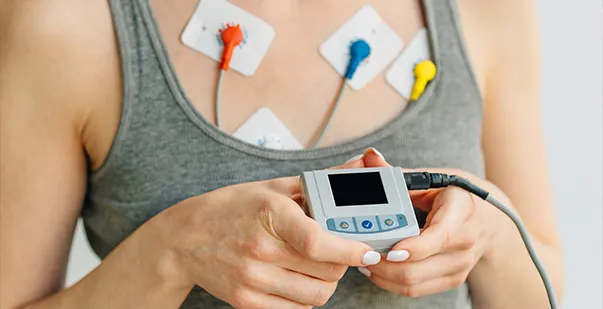Table of Contents:
- Introduction
- What is a Holter Monitor?
- Why is a Holter Monitor Used?
- How Does a Holter Monitor Test Work?
- Interpretation of Holter Monitor Results
- Holter Monitor As a Key to Heart Health!
Heart disease remains one of the leading causes of death worldwide, with one person dying from a cardiovascular disease every 33 seconds. This makes continuous heart monitoring a critical tool in detecting early signs of heart issues. A Holter monitor is a device that helps track intermittent heart conditions that may go undetected in a standard electrocardiogram (ECG).
In this blog, we will explore the specifics of this heart monitor, including its uses, test details, and what your Holter monitor results might reveal.
Master ACLS Now
Get ACLS certified with confidence
What is a Holter Monitor?
A Holter monitor is a portable device used to continuously record the heart’s electrical activity over a period of time, typically 24–48 hours. It is helpful in diagnosing irregular heart rhythms and other cardiac issues that may not show up during a short ECG test at a clinic.
The diagram shows how a Holter monitor works:
- Electrodes: Small sticky patches attached to the chest. These detect the electrical signals produced by the heart.
- Wires: The electrodes are connected by wires to the Holter monitor.
- Heart: The signals from the heart are recorded by the monitor.
- Holter Monitor: A small portable device worn on the body (e.g., clipped to a belt or placed in a pocket). It stores the heart’s electrical activity for analysis.
- ECG Reading: The graph on the right shows a sample heart rhythm recorded by the monitor. It visualizes the heartbeats over time and helps in identifying any irregularities.
The device is painless to wear and allows people to continue their daily activities while their heart activity is being monitored.
Why is a Holter Monitor Used?
A Holter heart monitor is recommended when a standard ECG can’t capture irregularities. ItThe Holter monitor records every heartbeat continuously, providing more detailed information over an extended period. This can help doctors catch issues that occur sporadically or under specific conditions like stress or physical activity. Some common uses of a Holter monitor include:
-
Identifying Irregular Heart Rhythms
Doctors commonly recommend a Holter monitor test to diagnose arrhythmias, where the heart beats too fast, too slow, or irregularly. Symptoms like dizziness, fainting, or palpitations often prompt doctors to recommend a Holter monitor for further investigation. Types of heart rhythms detected with Holter monitor are as follows:
-
- Tachycardia: When the heart beats too fast (over 100 beats per minute).
- Bradycardia: When the heart beats too slow (less than 60 beats per minute).
- Atrial Fibrillation (AFib): An irregular heart rhythm that can lead to stroke or heart failure.
- Premature Ventricular Contractions (PVCs): Extra heartbeats starting from the heart’s ventricles.
-
Evaluating Treatment and Medication Efficacy
If you’re already taking medications for a heart condition or have undergone treatments like a pacemaker insertion, a Holter monitor can provide insights into how well your treatment is working. Continuous monitoring can help doctors determine whether adjustments to your treatment plan are necessary.
-
Special Considerations for Women
Women may experience different or less obvious heart symptoms than men. A female Holter monitor detects these symptoms that may otherwise be overlooked.
Subtle signs, such as fatigue or nausea, are often associated with heart issues in women, and long-term monitoring provides a more comprehensive assessment of heart health. Thus, women are recommended to wear a 48-hour woman Holter monitor for complete monitoring and analysis of their symptoms.
-
Recording Your Symptoms
Your activity diary is a part of the Holter monitor test. Noting when symptoms occur allows doctors to compare these times with your heart’s recorded electrical activity. This correlation helps doctors determine the cause of your symptoms, whether they stem from heart-related issues or another condition.
Also Read: AED PAD Placement for Adults
How Does a Holter Monitor Test Work?
The Holter monitor test is noninvasive and straightforward, but it requires specific steps to ensure accurate data collection. The procedure is similar whether it is a female Holter monitor or a standard model.
Preparing for the Test
Before the test, you won’t need to fast or make significant changes to your daily routine. Once you arrive at the clinic or hospital, a technician will attach small electrode patches to your chest. These electrodes capture the electrical signals from your heart, which are then sent to the recording device, typically worn on a strap around your shoulder or waist. Following are the tips for wearing a Holter monitor:
- You cannot bathe, swim, or shower while wearing the monitor, as it must stay dry.
- Stay away from strong magnets and high-voltage areas. These can interfere with the data collection.
- Keep electronics at a distance. Devices like cell phones should be kept at least 6 inches away from the monitor to avoid interference.
Once the device is fitted, you can return to your normal routine, but you will need to keep a diary of your daily activities and any symptoms you experience, such as dizziness, palpitations, or shortness of breath.
What Happens After the Test?
Once the monitoring period is complete, return the device to your doctor. The data from the Holter heart monitor will be analyzed alongside your diary entries to create a detailed report. This report will summarize your heart rate, any detected arrhythmias, and other information.
Typically, you’ll receive your Holter monitor results within one to two weeks. Based on the findings, your doctor will discuss the next steps, which might include treatment options, additional tests, or changes to your lifestyle or medication.
Interpretation of Holter Monitor Results
After wearing the Holter monitor for 24 to 48 hours, or longer if necessary, you will return it to your healthcare provider, who will then analyze the data. Your Holter monitor results will offer insights into your heart’s functioning during the monitoring period.
-
Normal Results
Normal Holter monitor results indicate that your heart has been functioning normally throughout the monitoring period. This means no significant irregularities in heart rate or rhythm were detected, and no further immediate action is needed.
-
Abnormal Results
If the Holter monitor results reveal any abnormalities, your doctor may recommend further testing or treatments. Common findings in abnormal Holter monitor results include:
- Arrhythmias: Irregular heartbeats, such as atrial fibrillation or premature ventricular contractions (PVCs), that can cause symptoms like palpitations or dizziness.
- Heart Rate Issues: Significant periods of bradycardia (slow heart rate) or tachycardia (fast heart rate) that may warrant further investigation or treatment.
- Heart Ischemia: A condition where parts of the heart do not receive enough oxygen, often a sign of coronary artery disease.
Can a Holter Monitor Detect Blockage?
Although a Holter monitor can record arrhythmias and other electrical abnormalities in the heart, it cannot directly detect a blockage in the arteries. However, indirect signs, such as ischemia (reduced oxygen supply to the heart), can suggest a possible blockage. If ischemia is detected, your doctor may order more specific tests, like an angiogram, to check for blockages in your coronary arteries.
Also Read: Can You Use Pediatric/Child AED Pads on an Adult?
Holter Monitor As a Key to Heart Health!
The Holter monitor provides /insights that a standard ECG cannot. It tracks your heart’s rhythm and activity over a longer period, making it especially useful for detecting intermittent problems that might not appear during a brief in-office test. For those who experience unexplained symptoms like dizziness, chest pain, or palpitations, wearing a Holter monitor can be a life-saving diagnostic tool.
Advances in this technology have improved data analysis, patient comfort, and device use. However, clinicians and physician assistants should be aware of the possibility of arrhythmias, as patients usually present with non-specific symptoms.
In addition, healthcare providers should get certified in advanced cardiac life support to stay updated with recent advances in providing care during cardiac emergencies.








